
By the end of this section, you will be able to:Describe cognitionDistinguish concepts and prototypesExplain the difference between natural and artificial concepts
- Subject:
- Psychology
- Social Science
- Material Type:
- Module
- Date Added:
- 07/10/2017


By the end of this section, you will be able to:Describe cognitionDistinguish concepts and prototypesExplain the difference between natural and artificial concepts

U.S. History is designed to meet the scope and sequence requirements of most introductory courses. The text provides a balanced approach to U.S. history, considering the people, events, and ideas that have shaped the United States from both the top down (politics, economics, diplomacy) and bottom up (eyewitness accounts, lived experience). U.S. History covers key forces that form the American experience, with particular attention to issues of race, class, and gender.
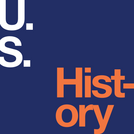
U.S. History is designed to meet the scope and sequence requirements of most introductory courses. The text provides a balanced approach to U.S. history, considering the people, events, and ideas that have shaped the United States from both the top down (politics, economics, diplomacy) and bottom up (eyewitness accounts, lived experience). U.S. History covers key forces that form the American experience, with particular attention to issues of race, class, and gender.Senior Contributing AuthorsP. Scott Corbett, Ventura CollegeVolker Janssen, California State University, FullertonJohn M. Lund, Keene State CollegeTodd Pfannestiel, Clarion UniversityPaul Vickery, Oral Roberts UniversitySylvie Waskiewicz
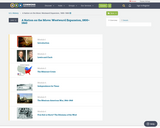
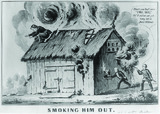
By the end of this section, you will be able to:Describe the terms of the Wilmot ProvisoDiscuss why the Free-Soil Party objected to the westward expansion of slaveryExplain why sectional and political divisions in the United States grewDescribe the terms of the Compromise of 1850

By the end of this section, you will be able to:Explain why American settlers in Texas sought independence from MexicoDiscuss early attempts to make Texas independent of MexicoDescribe the relationship between Anglo-Americans and Tejanos in Texas before and after independence
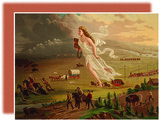
Lewis and ClarkThe Missouri CrisisIndependence for TexasThe Mexican-American War, 1846–1848Free Soil or Slave? The Dilemma of the West

By the end of this section, you will be able to:Explain the significance of the Louisiana PurchaseDescribe the terms of the Adams-Onís TreatyDescribe the role played by the filibuster in American expansion
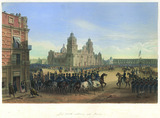
By the end of this section, you will be able to:Identify the causes of the Mexican-American WarDescribe the outcomes of the war in 1848, especially the Mexican CessionDescribe the effect of the California Gold Rush on westward expansion
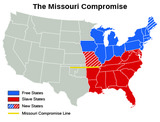
By the end of this section, you will be able to:Explain why the North and South differed over the admission of Missouri as a stateExplain how the admission of new states to the Union threatened to upset the balance between free and slave states in Congress

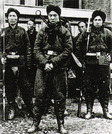
By the end of this section, you will be able to:Explain how economic power helped to expand America’s empire in ChinaDescribe how the foreign partitioning of China in the last decade of the nineteenth century influenced American policy
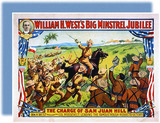
Turner, Mahan, and the Roots of EmpireThe Spanish-American War and Overseas EmpireEconomic Imperialism in East AsiaRoosevelt’s “Big Stick” Foreign PolicyTaft’s “Dollar Diplomacy”
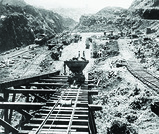
By the end of this section, you will be able to:Explain the meaning of “big stick” foreign policyDescribe Theodore Roosevelt’s use of the “big stick” to construct the Panama CanalExplain the role of the United States in ending the Russo-Japanese War
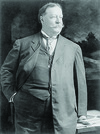
By the end of this section, you will be able to:Explain how William Howard Taft used American economic power to protect the nation’s interests in its new empire
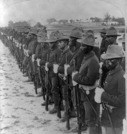
By the end of this section, you will be able to:Explain the origins and events of the Spanish-American WarAnalyze the different American opinions on empire at the conclusion of the Spanish-American WarDescribe how the Spanish-American War intersected with other American expansions to solidify the nation’s new position as an empire
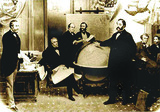
By the end of this section, you will be able to:Explain the evolution of American interest in foreign affairs from the end of the Civil War through the early 1890sIdentify the contributions of Frederick Jackson Turner and Alfred Thayer Mahan to the conscious creation of an American empire

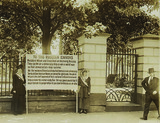
By the end of this section, you will be able to:Explain how the status of organized labor changed during the First World WarDescribe how the lives of women and African Americans changed as a result of American participation in World War IExplain how America’s participation in World War I allowed for the passage of prohibition and women’s suffrage
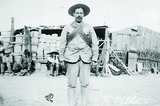
By the end of this section, you will be able to:Explain Woodrow Wilson’s foreign policy and the difficulties of maintaining American neutrality at the outset of World War IIdentify the key factors that led to the U.S. declaration of war on Germany in April 1917